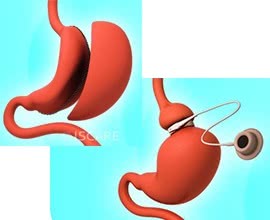Bariatric Surgery: Types & Procedures Part I
Bariatric surgery, also known as weight-loss surgery is a type of surgery designed to make changes to a patient's digestive system in order to help them lose weight by restricting the amount they can eat and/or reducing the absorption of nutrients.[1] Individuals also opt for bariatric surgery in order to lower the risk of medical problems related to obesity.[2]
Bariatric surgery can be divided into the following categories[3]:
- Restrictive - these surgeries contribute to weight-loss by shrinking down the size of the stomach and slowing digestion. A normal stomach can hold around three pints of food but a post-surgery stomach may hold as little as an ounce of food, maybe two to three ounces if it stretches after. A smaller stomach means less food eaten and less food eaten leads to weight loss.
- Malabsorptive - these surgeries change the way your body takes in and absorbs food by removing or bypassing part of your digestive tract, making it harder for your body to absorb calories
- Implanting of an electrical device - this is the newest and latest technique in bariatric surgery. By implanting an electrical device, it induces weight-loss by disrupting the signals between the stomach and the brain.

Bariatric surgery can be further broken down into different procedures under the aforementioned categories above. Depending on your physical and medical condition, BMI and other needs and requirements, you may be eligible for one or more of the following bariatric surgical procedures[4]:
- AspireAssist - a tube connected to the outside of your body that helps drain a portion of your stomach's contents so you consume less calories
- Duodenal Switch - the removal of a portion of your stomach and rearrangement of your intestines to help you feel less hungry and fuller quicker when you eat. It also helps to limit the amount of calories and nutrients absorbed by the body
- Gastric Balloon - a temporary saline-filled, silicone balloon inserted into the stomach in order to limit your food intake and induce a sense of fullness and satiety
- Gastric Bypass - splitting the stomach into two sections so you feel full sooner after eating
- Gastric Sleeve - removing a portion of your stomach in order to help you feel less hungry and more full while eating
- LAP-BAND - an adjustable band wrapped around the top section of your stomach to help you feel fuller quicker when you eat
- vBloc Therapy - an implanted device below the ribcage that disrupts signals from your stomach to your brain, making you feel full between meals and less hungry during meals.
To be continued...
Sources:
[1] Mayo Clinic Staff, 'Bariatric Surgery', in Mayo Clinic, published August 30th, 2018, viewed on October 20th, 2018, https://www.mayoclinic.org/tests-procedures/bariatric-surgery/about/pac-...
[2] Mayo Clinic Staff, 'Guide to Types of Weight-Loss Surgery', in Mayo Clinic, published May 27th, 2016, viewed on October 20th, 2018, https://www.mayoclinic.org/tests-procedures/gastric-bypass-surgery/in-de...
[3] 'Choosing a Type of Weight Loss Surgery', in WedMD, reviewed by Melinda Ratini, DO, MS, published March 26th, 2018, viewed on October 20th, 2018, https://www.webmd.com/diet/obesity/weight-loss-surgery-making-the-choice#1
[4] '7 Types of Weight Loss Surgery - How Each Will Affect You' in Bariatric Surgery Source, reviewed by John Rabkin, MD, FACS, last updated September 18th, 2018, viewed on October 20th, 2018, https://www.bariatric-surgery-source.com/types-of-bariatric-surgery.html











